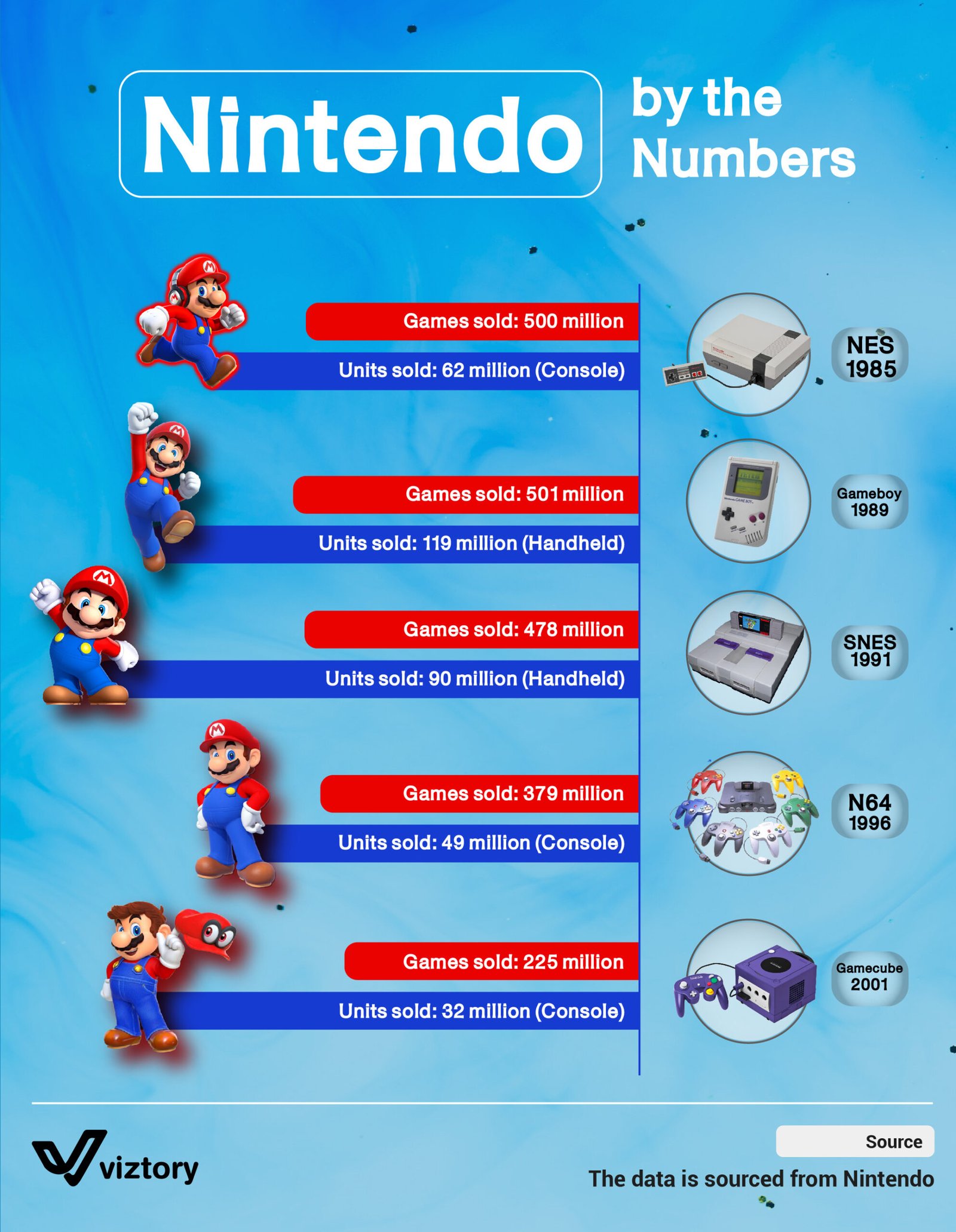Nintendo by the Numbers
-
Jan, Sun, 2025
Introduction: Nintendo has been a cornerstone in the world of gaming, blending innovation with entertainment for decades. From its humble beginnings in the 1980s to becoming a global powerhouse, Nintendo has transformed the gaming landscape with its iconic consoles and games. This article explores the remarkable journey of Nintendo, highlighting its significant milestones and contributions to technology and gaming culture.
Main Content:
The Legacy of NES (1985): The Nintendo Entertainment System (NES) was a game-changer in the gaming industry, selling 62 million units and 500 million games worldwide. As one of the earliest home consoles, NES laid the foundation for modern gaming by introducing beloved franchises like Mario and Zelda, showcasing the potential of video games as a form of mainstream entertainment.
The Revolution of Game Boy (1989): The Game Boy revolutionized handheld gaming, with 119 million units sold and 501 million games played globally. It became synonymous with portable entertainment, providing players the ability to enjoy gaming on the go. Titles like “Tetris” and “Pokemon” turned the Game Boy into a cultural phenomenon, pushing the boundaries of gaming technology.
Super Nintendo Entertainment System (SNES, 1991): With 90 million units sold and 478 million games enjoyed, the SNES elevated gaming graphics, sound, and storytelling. This console introduced some of the most iconic titles in history, including “Super Mario World” and “The Legend of Zelda: A Link to the Past,” which set new standards for immersive gaming experiences.
Nintendo 64 (1996): The Nintendo 64, with 49 million units sold and 379 million games played, brought 3D gaming to the forefront. Titles like “Super Mario 64” and “The Legend of Zelda: Ocarina of Time” showcased the potential of 3D environments, influencing the direction of gaming technology for years to come.
GameCube (2001): The GameCube marked a step toward more competitive gaming hardware, selling 32 million units and 225 million games. While it faced stiff competition, it remains beloved for its innovative design and cult classics like “Super Smash Bros. Melee” and “Metroid Prime.”
Conclusion: Nintendo’s journey through the decades is a testament to its ability to innovate and adapt to changing technological landscapes. From pioneering home consoles to revolutionizing handheld gaming, Nintendo has left an indelible mark on the gaming industry. Its legacy not only reflects advancements in gaming technology but also the ability to create experiences that resonate with players of all ages. As gaming continues to evolve, Nintendo remains at the forefront, inspiring the future of entertainment and technology.

